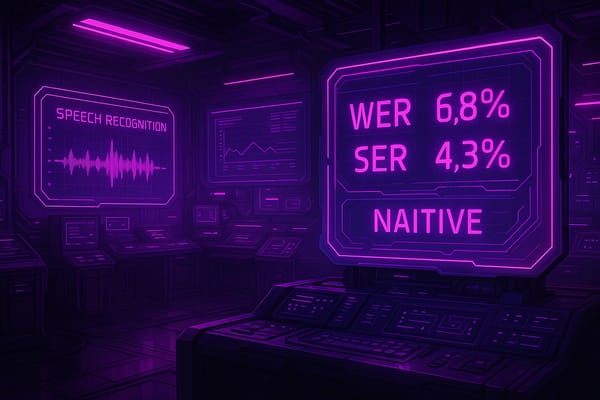AI Governance in Digital Transformation: Key Challenges
Explore the critical challenges and solutions in AI governance as organizations navigate the complexities of digital transformation.

Deploying AI without proper governance is risky. Here’s why it matters and what you need to know:
- 92% of businesses lack solid AI governance frameworks, despite 78% accelerating AI adoption.
- Poor governance results in issues like bias, lack of transparency, and regulatory fines (up to €35M or 7% of revenue under the EU AI Act).
- Examples include lawsuits over AI discrimination and incorrect AI-driven customer support.
- Strong governance boosts stakeholder trust by 47%, speeds up regulatory approvals by 63%, and improves ROI by 156%.
Key Challenges in AI Governance:
- Managing complex AI systems and ensuring data quality.
- Navigating overlapping regulatory requirements.
- Addressing ethical concerns like bias, accountability, and privacy.
Solutions:
- Develop flexible governance frameworks focusing on ethics, transparency, and compliance.
- Conduct ethical impact assessments and engage diverse stakeholders.
- Use AI consulting services to build internal governance capabilities.
The bottom line: AI governance isn’t just about compliance - it’s a way to build trust, reduce risks, and drive better outcomes. Start now to stay ahead.
Strategies for AI Governance: Staying ahead in an evolving landscape
Main Challenges in AI Governance Implementation
While the advantages of strong AI governance are evident, putting these frameworks into action is far from simple. Organizations encounter a maze of technical, regulatory, and ethical issues that can derail even the most well-intentioned efforts. Understanding these challenges is crucial to finding effective solutions. Below are some of the key obstacles in implementing AI governance frameworks.
Managing Complex AI Systems
The technical complexity of modern AI systems presents a significant challenge for governance. Unlike traditional software, AI involves interconnected components that pull data from multiple sources and often rely on third-party services. This makes it difficult to maintain clear oversight of how data flows and decisions are made.
"Integrating multiple AI technologies into existing systems is daunting".
This complexity is compounded by data quality issues. Poor data quality costs companies an average of $12.9 million annually, and when these errors feed into automated processes, they can create governance blind spots. Adding to the difficulty is the rapid pace of technological advancement, which frequently outstrips existing regulatory frameworks. As a result, organizations often find themselves reacting to problems rather than proactively managing their systems.
Meeting Regulatory and Compliance Requirements
The regulatory landscape for AI is a patchwork of requirements that differ by industry, geography, and use case. According to Gartner, half of the world's governments expect businesses to comply with various laws and data privacy rules to promote responsible AI usage. In the United States, for example, companies must navigate federal laws like the Age Discrimination in Employment Act alongside evolving state-specific regulations. These overlapping requirements can expose organizations to significant compliance risks.
Industry-specific rules add another layer of complexity. In healthcare, AI systems must comply with HIPAA when handling patient data, while financial institutions face scrutiny from banking regulators. As Jan Stappers LLM points out, "The evolution of AI requires compliance leaders to be forward-thinking and proactively engage with the growing regulatory landscape to mitigate risks and maximize opportunities for innovation". Despite these efforts, only 18% of organizations have established enterprise-wide councils to oversee responsible AI governance.
Handling Ethical Issues in AI Systems
Ethical challenges in AI governance go beyond compliance, touching on organizational values and trust with stakeholders. These issues are just as critical as the technical and regulatory hurdles, emphasizing the need for a well-rounded governance approach. One key concern is the lack of transparency in AI models, which can lead to biased or unfair outcomes. Often, these issues only come to light after causing significant harm. Algorithmic bias, for example, has been shown to result in discriminatory practices in hiring, lending, and other crucial areas.
Accountability and transparency are additional hurdles. The complexity of AI systems can make it unclear who is responsible when decisions negatively affect customers, employees, or communities. Data privacy concerns further complicate the picture, as AI systems often require vast amounts of personal information to function. With over 6 billion malware attacks reported globally in 2023, protecting sensitive data is a critical priority.
Another emerging issue is the environmental impact of AI. Large AI models demand enormous computational resources, forcing organizations to balance innovation with their sustainability goals. Finally, the pressure to innovate quickly while maintaining ethical oversight adds another layer of difficulty.
"We need to be sure that in a world that's driven by algorithms, the algorithms are actually doing the right things. They're doing the legal things. And they're doing the ethical things" - Marco Iansiti, Harvard Business School Professor.
Solutions for AI Governance Challenges
Navigating the challenges of AI governance is possible with well-structured approaches that address technical, regulatory, and ethical hurdles. The key lies in developing adaptable frameworks that keep pace with the ever-changing AI landscape.
Building Flexible Governance Frameworks
To create governance frameworks that stand the test of time, it’s crucial to focus on core principles rather than specific technologies. These frameworks should emphasize ethical guidelines, regulatory compliance, accountability, transparency, and strong risk management practices.
Consider this: over half of companies admit they lack full control over their AI systems. Meanwhile, failing to comply with the EU AI Act could result in fines as high as €35 million or 7% of annual revenue. Despite these risks, only 60% of organizations have implemented - or plan to implement - a dedicated AI governance function within the next year, leaving a major gap for proactive businesses to fill.
To address these challenges, companies can adopt tools like standardized templates for model cards, data lineage tracking, and risk assessments. These tools help maintain consistent documentation and protect AI systems from potential manipulation. Gaining leadership support is equally important. Demonstrating tangible benefits - like improved risk management, stronger customer trust, and operational efficiency - can make the case for robust AI governance.
Adding Ethical Principles to AI Development
Ethics must be woven into every stage of AI development. Key principles like fairness, transparency, accountability, privacy, and safety should guide decision-making throughout the process. This isn’t a one-off task - it requires ongoing commitment to ensure AI remains responsible and trustworthy.
Some companies are already leading the way. IBM, for instance, has an internal AI Ethics Board to ensure its technology aligns with its Principles of Trust and Transparency. Similarly, Google’s Responsible AI Practices aim to reduce bias and prevent harmful uses of AI. Microsoft has also developed a Responsible AI Standard that prioritizes fairness, reliability, inclusiveness, privacy, and accountability.
To put these principles into action, organizations can conduct ethical impact assessments at critical stages. These assessments help identify and address potential risks early. Engaging diverse stakeholders brings fresh perspectives and uncovers ethical concerns that might otherwise go unnoticed. Documenting the decision-making process adds transparency and creates a clear accountability trail. Continuous monitoring, through ethical audits and fallback mechanisms with human oversight, ensures that ethical standards evolve alongside the AI systems themselves.
"You can't take a siloed approach to AI. We have to bring together expertise across engineering, governance, and ethics to implement responsible AI."
– Wendy Turner-Williams, Founder, TheAssociation.AI
Using AI Consulting Services for Governance
AI consulting services can be a game-changer for organizations looking to implement effective governance. These experts help businesses navigate complex regulations, align AI initiatives with broader goals, and tackle industry-specific or multi-jurisdictional challenges that may overwhelm internal teams.
The importance of AI governance has even caught the attention of the Department of Justice. Deputy Attorney General Lisa Monaco emphasized:
"And compliance officers should take note. When our prosecutors assess a company's compliance program - as they do in all corporate resolutions - they consider how well the program mitigates the company's most significant risks. And for a growing number of businesses, that now includes the risk of misusing AI. That's why, going forward and wherever applicable, our prosecutors will assess a company's ability to manage AI-related risks as part of its overall compliance efforts."
– Lisa Monaco, Deputy Attorney General, Department of Justice
Take NAITIVE AI Consulting Agency as an example. They specialize in creating comprehensive AI governance structures that address technical, regulatory, and ethical complexities. Their approach balances innovation with control by building autonomous AI systems that maintain accountability.
Beyond offering external expertise, consulting services also help organizations build internal capabilities. Through knowledge transfer and team training, they empower businesses to establish sustainable governance practices. This creates a governance culture that spans all organizational levels. By partnering with consultants who understand the full lifecycle of AI governance - covering policies, procedures, and ethical considerations - companies can innovate responsibly while keeping risks in check.
Case Studies: Examples of Successful AI Governance
Strong AI governance is the backbone of digital transformation, offering a clear path for balancing innovation with accountability. Both public and private sectors provide valuable lessons in implementing responsible AI practices while maintaining trust and compliance.
Public Sector: Estonia's AI-Driven Digital Services
Estonia has earned a reputation as a leader in digital government services, ranking second globally with an impressive E-Government Development Index (EGDI) score of 0.9727. Its approach to AI governance showcases how governments can responsibly integrate AI while prioritizing citizen trust and regulatory alignment.
Strategic Foundation and Infrastructure
Estonia’s success didn’t happen overnight. It started with the development of a robust digital infrastructure after regaining independence in 1991. The X-Road platform, which facilitates secure data exchange between government agencies, became the cornerstone of their system. This infrastructure ensures data consistency and addresses governance challenges tied to AI.
Real-World AI Applications
Estonia has implemented AI in several impactful ways, including:
- Bürokratt: A virtual assistant streamlining government services.
- AI-powered health systems enhancing healthcare delivery.
- AI-driven traffic management optimizing urban mobility.
Tackling Challenges with Data Sharing
To overcome hurdles in AI implementation, Estonia embraced strategic data-sharing initiatives. Kristjan Prikk, Estonia's ambassador to the U.S., emphasized this approach:
"We are making a conscious effort to make the data available from different government agencies across the board so that it's searchable and that it's usable."
This forward-thinking strategy allowed Estonia to shift from reactive services to proactive, AI-powered support that anticipates citizen needs.
Results and Future Plans
The impact of Estonia’s AI initiatives is measurable. By 2024, 14% of Estonian businesses were using AI, a significant jump from 5% in 2023. To further this progress, the government is investing €85 million to promote AI adoption across public and private sectors by 2030. Additionally, the AI Leap initiative, launched in 2025, aims to educate 20,000 high school students and train 3,000 teachers in AI tools and applications.
While Estonia sets the benchmark for public sector AI governance, the financial services industry offers its own insights into managing AI responsibly in a highly regulated environment.
Enterprise Example: AI Governance in Financial Services
Financial institutions face unique challenges when it comes to AI governance. With strict regulations and high-stakes decisions, these organizations are building comprehensive frameworks to address risks while leveraging AI’s potential.
JPMorgan Chase: Explainable AI
JPMorgan Chase has prioritized transparency by establishing an Explainable AI Center of Excellence and hiring 400 AI experts in early 2024. The bank also partners with academic institutions like MIT to develop socially responsible AI practices.
Visa: Collaborative Governance for Bias Mitigation
Visa has adopted a cross-functional approach, bringing together teams from legal, risk, policy, and social impact departments to tackle bias in AI systems. Their AI solutions have already prevented $40 billion in fraud as of March 2024. Don Hobson, Visa’s Chief Information Officer, highlighted the potential of generative AI:
"As we look to the future, gen AI's capacity to process vast amounts of data could significantly enhance our fraud models."
Visa also collaborates with Stanford University to address ethical challenges in technology.
Barclays: Ethical Data Practices
Barclays integrates ethical data principles through its partnership with the Open Data Institute, using tools like the Data Ethics Canvas to guide its AI initiatives.
Industry-Wide Insights
AI adoption could unlock up to $1 trillion in additional value for the global banking sector. Key applications include fraud detection (used by 85% of financial institutions), transaction monitoring and compliance (55%), and personalized customer experiences (54%). However, public trust remains a challenge, with 61% of people expressing caution about relying on AI systems. This underscores the importance of strong governance frameworks to build confidence.
These examples highlight how effective AI governance can strike the right balance between innovation, accountability, and trust, ultimately reducing risks and driving meaningful results for organizations.
Conclusion: Building Strong AI Governance Frameworks
Effective AI governance isn't just about meeting compliance requirements - it's about crafting flexible frameworks that grow alongside your technology and business goals. The numbers paint a clear picture: while 78% of enterprises are accelerating AI deployment, 92% lack comprehensive governance frameworks. This gap presents both a significant risk and a chance to gain a competitive edge. Organizations that address these challenges can see 47% higher stakeholder confidence, 63% faster regulatory approvals, and 156% better AI investment returns.
The shift from compliance to trust is essential. As Anjella Shirkhanloo from Alteryx puts it:
"The next phase of AI governance will not be defined by rigid policies but by dynamic, proactive oversight."
This means moving beyond static policies to embrace real-time risk monitoring, iterative oversight, and cross-functional collaboration. These practices are vital to staying ahead of regulatory, ethical, and technical challenges, as highlighted earlier in this discussion.
Adopting adaptive governance isn't just a necessity - it's a competitive advantage. According to Gartner, organizations that embrace adaptive AI will outperform their competitors by 25% by 2026. However, building these capabilities internally is no small feat. Around 60% of organizations cite limited skills and resources as barriers to AI success.
For those looking to overcome these challenges, expert guidance can make all the difference. NAITIVE AI Consulting Agency specializes in helping businesses develop responsible, scalable governance frameworks that ensure AI systems remain ethical, compliant, and aligned with business goals - all while fostering innovation.
The future belongs to companies that treat governance as a strategic enabler rather than a regulatory burden. Investing in adaptive AI governance now can help organizations avoid disruptions and position themselves as leaders in responsible AI innovation. The real question is not whether to implement AI governance, but whether you're ready to build the dynamic, trust-driven frameworks needed to thrive in an AI-powered world.
Take action today: set up cross-functional teams, adopt real-time monitoring tools, and partner with experts to create governance frameworks that last.
FAQs
What are the essential components of an effective AI governance framework, and how can organizations successfully implement them?
An effective AI governance framework relies on several essential components to ensure AI systems are managed responsibly and efficiently. These include risk assessment to pinpoint potential challenges, adherence to ethical and legal standards, and impact evaluation to ensure AI initiatives align with organizational objectives and data protection requirements.
To bring these elements to life, organizations should form a diverse governance team, assign clear roles and responsibilities, and consistently monitor AI systems for both compliance and performance. Regular audits, transparent operations, and a commitment to ethical principles play a crucial role in fostering trust and ensuring responsible AI development. By embedding these practices, organizations can better navigate the complexities of AI governance while steering their digital transformation efforts in the right direction.
How can businesses keep up with rapid AI advancements while meeting current and future regulatory requirements?
To navigate the rapidly changing AI landscape while meeting regulatory requirements, businesses need a forward-thinking and adaptable approach to AI governance. This means keeping a close eye on evolving regulations and integrating compliance measures into every stage of AI development. Leveraging AI-powered tools can be a smart way to spot potential compliance issues early, giving businesses the chance to make necessary changes before problems arise.
Equally important is fostering a culture that prioritizes compliance. Providing employees with proper training and raising awareness ensures the entire team understands and follows legal and ethical guidelines. Partnering with regulatory authorities and establishing strong data management practices can also go a long way in addressing privacy and ethical challenges. By staying informed and prepared, companies can strike the right balance between innovation and compliance.
How can companies address ethical concerns like bias and transparency when using AI systems?
To address ethical challenges like bias and transparency in AI systems, companies can implement several practical strategies:
- Train with diverse datasets: Using inclusive and representative data ensures AI models better reflect a variety of perspectives, reducing bias and promoting equity.
- Perform regular audits: Routine evaluations help uncover and fix biased or unintended outcomes, keeping systems aligned with ethical goals.
- Set clear ethical guidelines: Establishing governance frameworks ensures AI development and deployment adhere to legal and ethical standards.
Involving cross-functional teams with varied backgrounds during AI development can also boost accountability and help spot hidden biases early on. Ongoing monitoring and updates are crucial to adapt to new challenges and maintain ethical, transparent decision-making as AI systems evolve.




